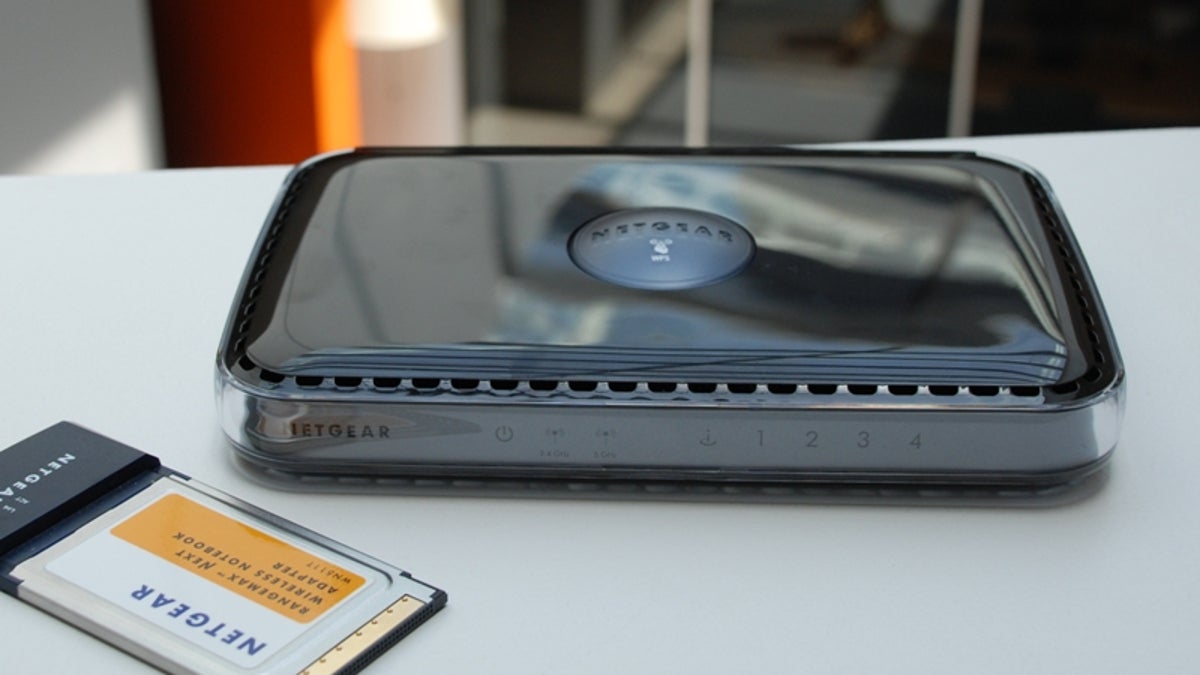Netgear blends frequencies with WNDR3300
new router from Netgear that can operate in 2.4GHz and 5GHz simultaneously, in a hacking kind of way.

Ever since the review of the D-Link DGL-4500, a Draft N 2.0 router can operate in ether 2.4GHz or 5GHz frequencies, I've been anticipating the day when I can get my hands on a router that can operate in both frequencies simultaneously. Today is that day.
Out of the blue, I just received the RangMax Dual Band Wireless-N Router WNDR3300 from Netgear. The router looks very much like others in Netgear's RangeMax series with the sleek casing (that attracts fingerprints very easily) and the round, big button on top that glows blue light when the router is at work. However, this is the first router I've received so far that's capable of operating in both 2.4GHz and 5GHz at the same time.
For a long time, most routers (both Wireless-G and Draft N) have been made to operate in the 2.4GHz frequency. With the proliferation of the wireless networking in the last couple of years, chances are there might be a few working right now in your vicinity. On top of that, other home electronics such as cordless phones, Bluetooth devices, and so on also use this 2.4GHz frequency to transmit their radio signal. This results in the fact that the 2.4GHz spectrum is getting more and more crowded and interference (or noise) is inevitable. In this kind of environment, the 2.4GHz Wi-Fi networks' signal and stability are prone to degrade. Moving to 5GHz would solve this problem by tapping into an unused radio spectrum. However, for this to work, both the access point (included in all wireless routers) and the Wi-Fi clients of the wireless network have to support this frequency. Since there are so many existing 2.4GHz Wi-Fi adapters, the only way to guarantee the backward compatibility is having a router that works with both and at the same time. And the Netgear WNDR3300 is the first one I've seen so far that fits in these criteria, though not quite exactly the way I thought it should be.
To my disappointment, the Netgear WNDR3300 doesn't really offer Dual-Band Draft N 2.0 but rather a dual access point, one being the regular Wireless-G (2.4GHz only) and the other is the Draflt N 2.0 that can be set to operate in either 5GHz or 2.4GHz frequency. This means when working in dual-band mode, the router only allows for max 2.4GHz throughput of up to only 54Mbps (as opposed to 270Mbps if it works in 2.4GHz only mode). While this is not the kind of Dual-Band I was looking for, it is still the first router that supports 5GHz adapters without leaving out the 2.4GHz crowd. The Netgear WNDR3300 is also a simple router. It offers Wi-Fi Protected Setup (which is nice, but rather standard now with almost all new routers), but doesn't even have Gigabit Ethernet. It has no USB port, which means no print serving or any other USB-related features, either.
You can get the Netgear WNDR3300 now for about $100, which seems like a good deal, considering its intuitive web-interface, sleek internal antenna design, decent networking feature set and the capability of working with both 5GHz and 2.4GHhz Wi-Fi adapters simultaneously.

